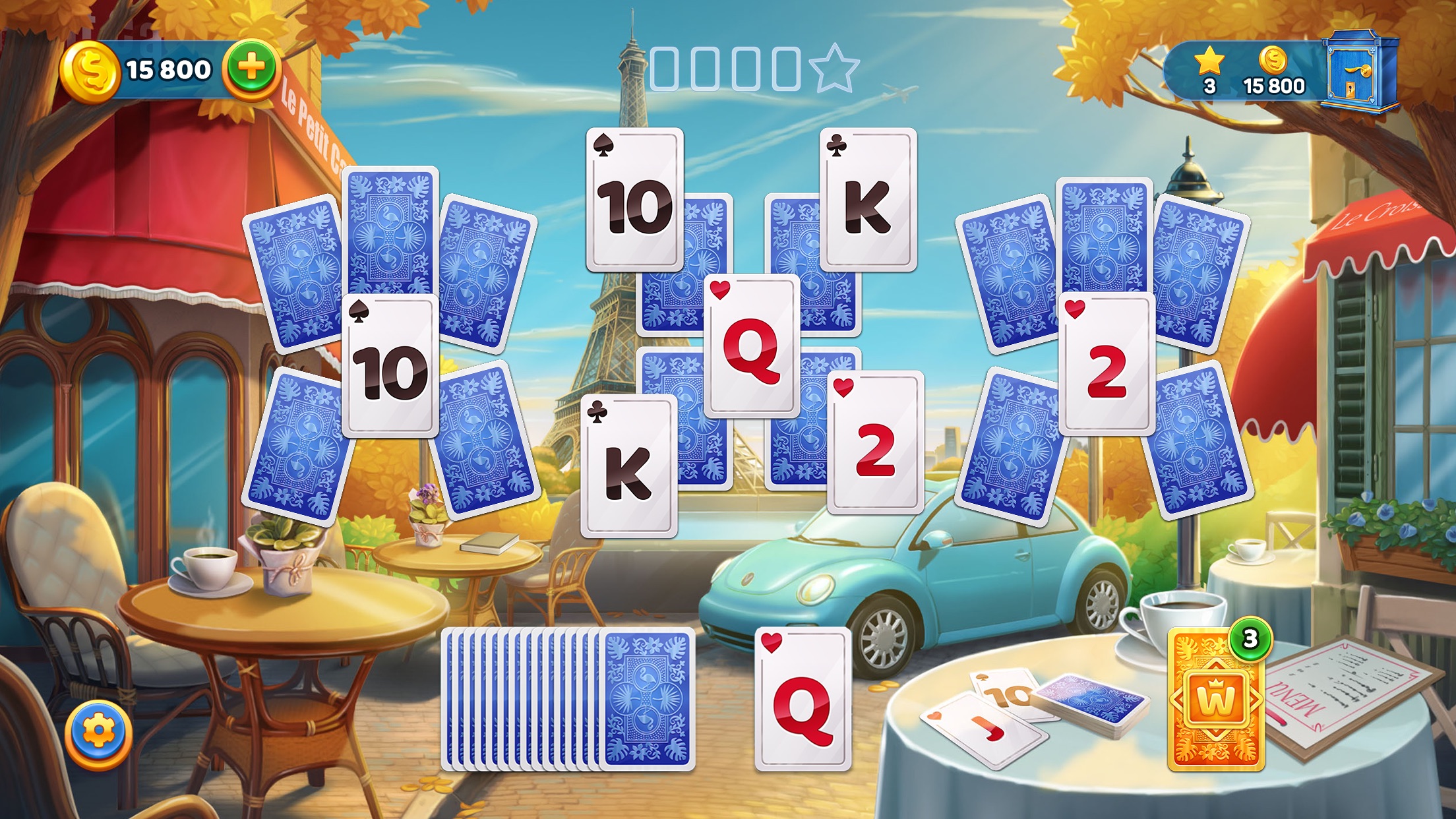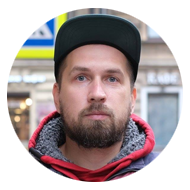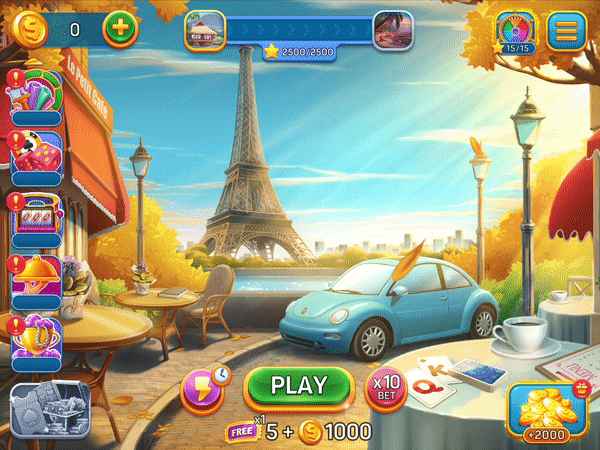Solitaire Cruise Retrospective: how the game changed in the first year of surgery
A little over a year has passed since the worldwide release of Solitaire Cruise. During this time, the project has managed to grow greatly and enter the box office top 3 tapeworms in the world. In this regard, Belka Games talked about how the first twelve months of surgery went for the project team.
Solitaire Cruise
Solitaire Cruise is a casual game in the solitaire genre. In it, the player goes on a cruise ship trip to famous cities and plays solitaire. When he gets the right number of stars, the next location opens. On board, the player meets different heroes who offer him to participate in different events and tell their stories. In addition, mini golf is periodically opened, and sailing regattas are also held. We wrote about the project in detail here.
Evgeny Gilmanov, Executive Game Producer at Belka Games
The material is divided into sections. Each contains several chapters. Most of them are devoted to one or another aspect of the game and what changes it has undergone recently.
But first I will outline the main principle that we adhered to in our work.
The main principle: all changes are made through tests
At Belka Games, we adhere to a data-driven approach — we have a large department with its own system, which is responsible for almost all aspects of games, for analytics.
It often happens that there is data, schedules, too, but “flair solves” 90% of the tasks for the development of the project. Here we have moved away from this as much as possible. We have introduced a rule for all team members: to be guided by data when making any decision. This approach helps us in evaluating the effectiveness of features, it also allows us to find insights.
We have tested a lot of changes over the year. Thanks to the tests, we always knew how the next feature would affect (and whether it would affect) the metrics of the game, and in the process we abandoned the most obvious things that, it would seem, needed to be added to our features. The principle is simple: if something doesn’t work, the product doesn’t need it. Change for the sake of change is evil.
And now to the project.
1. Working on content
Preparations for the world release were proceeding at an intensive pace. The last six months before the full release were especially hot. We had two main tasks:
- build a playable build with enough content for the main game cycle;
- prepare a minimal set of temporary events.
Therefore, we first did something that would positively affect the metrics, and then we started polishing the gameplay. At this stage, the priority for us was not the perfect quality of animation and graphics, but the viability and scalability of the game.
After the global launch, when we gained a sufficient number of active audience and closed the necessary positions in the team, we faced an urgent need to reach a new level of quality.
We have divided the work on improving the content into several streams:
- character art;
- UI/UX optimization;
- working with music and sounds;
- narrative;
- animations.
I will focus on each stream in more detail.
1.1 Character Art
Initially, our characters were made in 2D. At first it suited us, but over time we wanted to move away from cartoonishness in style. After all, the game is “conceptually” about the real world. In addition, we wanted to make the process of creating characters more flexible and generally improve their quality. So we switched to 3D.
Today we don’t need to draw and animate characters from scratch. We have ready-made scenes with customized lighting, camera and basic meshes that already have a rig set up. The leather materials are also pre-configured (and can be adjusted in tone and color).
Now, when preparing a new character, it remains for us:
- as part of sculpting, to give uniqueness to the features of the face and body;
- to model clothes, accessories;
- put in the right poses and give the face the right set of emotions with the help of a facial rig.
The finished render is minimally post-processed in Photoshop.
So in terms of the quality of the study of the textures of faces, clothes, hair and other details, we have reached a completely new level for ourselves.
1.2 UI
Each new release brings new functionality: tournaments, discounts, combat passes, advertising points. Events are constantly compacted and layered on top of each other.
This leads to the fact that it is necessary to constantly rethink the logic of the interface, the compatibility of buttons and tools.
This was especially important for us, since the decisions made at the softlonch stage, given the growth rate of the game, quickly ceased to meet the needs of the product.
Initially, the team responsible for UI/UX did not have clearly regulated standards for elements, there were no rules by which the user should interact with the game.
Interface Evolution
So we decided to take our time and prepared a plan according to which we will work with the interface in the game. We were moving along it.
- First we introduced standards.
- Then we put the same type of elements all together.
- After that, they were brought to a common denominator, according to the standards.
- Immediately we laid down the logic of the behavior of the elements on the main screen.
- We have set priorities for showing windows.
- As part of the final step, we have rebuilt the UI of the main screen.
Was/became
1.3 Animation
Prior to the worldwide release, the Solitaire Cruise team did not have its own animation specialists. I had to solve only the necessary tasks by colleagues from other teams.
After the release of the game into full-fledged operation, of course, it could not continue like this. Animations are an important component of a modern mobile product. It is the animations that create a sense of the “responsiveness” of the game to any of the player’s actions, whether it is clicking on the settings button or displaying a victory.
We gathered a team of animation company leaders and game designers, and with their help we made a large document on standards based on the experience within the company and references. The work went on for almost six months, but in the end we managed to bring this part of the game to a state that meets the requirements of modern mobile games.
1.4 Music
We wanted to take a thorough approach to every aspect of the game. Including to
the musical component. We have supplemented each world with a unique musical theme that suits the mood of the visual.
After that, new worlds came out with their own animation and unique music — so that the player could feel the atmosphere.
2. We play for involvement
The plan for the first year of operation was as follows: to make players want to spend time in Solitaire Cruise every day.
At the time of the game’s release, we were far from competitors in terms of content, and from other Belka Games with a long history
We knew how this affects metrics, so we started catching up.
2.1 Working with updates and mechanics
In the old Solitaire Cruise calendar, the density of events was several times less than in other Squirrel flagships — Clockmaker or Funky Bay.
Thanks to many years of product expertise, we understood which way to develop. Users of mobile games have quite developed habits for certain meta-mechanics — combat passes, piggy banks, discounts, holidays, decoration and so on. All of them are widespread and important not only as tools that affect business performance. Players are waiting for them from new products. They need extra variety in addition to the bark.
We understood how important it was to provide such an experience to users. And formally, it was impossible to approach the case. Adding any mechanics “for show” is more likely to harm than help the product. It is necessary to carefully introduce them into the project, adapt them to the core, setting, specifics.
Plus, we didn’t want to limit ourselves to familiar approaches. We wanted to provide players with a unique experience, something they had not encountered before in card games, and maybe in casual games in principle. So we got experimental mechanics: solitaire tournament at the card table, bowling, dice game, player’s cabin and much more.
2.2 More worlds!
Almost immediately after the release of the game in the world release, we received a cohort of players who “ate” the entire line of worlds and began to send support requests for the continuation of the game. We adjusted to the requirements of the players and expanded the line of worlds with each release. But we understood that the content race with the “whales” in our case is a one—way game. Content absorption will always outpace development.
Therefore, we decided to make a conditional superworld hub. When a player reaches the threshold number of stars, we give him a prize and send him to collect stars until the next reward. And as soon as a new location appears, we suggest that he continue his journey.
The idea, by the way, came from studying real cases of liners — some companies have their own mini-paradise islands for tourists.
Initially, we had 16 locations. Now this number has grown more than 2 times.
2.3 Reworking the level design
In addition to the metaphysics, we have worked closely on the game from the level design side.
We conducted a lot of experiments with starting levels, balance, output logic and input mechanics.
Gradually, the level design team had more tasks. Now they needed not only to add levels to the main line, but also:
- analyze and optimize all current levels;
- add new mechanics;
- prepare an additional line of levels for some LiveOps features.
By the way, over the year our small level design team has increased several times – as well as the volume of content produced.
3. Experimenting with geography
Most of the Tripeaks solitaire revenue comes from the USA. The market has long been divided by two major players, and it was difficult to understand whether we would be able to win our audience share.
Therefore, we decided to diversify our UA activities. As an experiment, we tried to actively promote ourselves, including in Asian markets, where, as it seemed to us, there were few chances to shoot and get a core audience.
If they hadn’t tried, they wouldn’t have known.
The first experiments showed good indicators. In a short time, we made localizations and restarted campaigns. As a result, we won both in terms of purchase volumes and core formation in initially seemingly non—core markets – now Solitaire Cruise is in 1st place in terms of revenue among competitors in the markets of Japan and South Korea (according to App Annie).
This case confirmed that the game can be in demand outside the USA, and we continued to move towards expanding the geography of our presence, without reducing attention to the USA, of course.
4. Improving the presentation of the narrative
In the process of the formation of the game, we considered several options for the presentation of the story. For example, it was possible to leave the game completely without it — you come to play solitaire, you play solitaire. Moreover, at that time we had quite understandable progress: you gain stars, you move through the worlds.
Of course, the market and the audience tell us that there should be a story in the game. On the other hand, changing the pitch would mean a complete reworking of the game, which we could no longer afford, and the metrics suited us.
Therefore, we approached the story through the concept of sitcoms. We decided to tell stories in the spirit of a weekly series about the heroes of the game who travel with the player on the liner.
This approach helped to avoid reworking the game, added a narrative component and became a motivating factor for completing levels for those players who care about the narrative.
The presentation of the narrative should also meet the needs of modern players. At the start, static characters and loot with text are the norm. Now they definitely needed optimization — they needed to add gloss so that the player was more involved in the story (and not only through text). The result looked like this:
The narrative of Solitaire Cruise, like other aspects of the game, does not stand still. We introduce new characters into the game, reveal them through a variety of stories, connect them with in-game events.
5. And other directions
5.1 Marketing
After a very good start last year, we, as well as in the market as a whole, have certain challenges in attracting a new audience.
In a more advantageous position were old products whose names remained in good positions in the search results, which still leads organics well.
The appearance of ATT (App Tracking Transparency) and, as a result, the increase in the cost of traffic on Google Play, somewhat reduced the growth rate of many games. We were not spared either. But the joint efforts of the internal marketing team of Belka Games and our strategic partner AppLovin allowed us to feel comfortable in general.
5.2 Entering new stores
From the experience of other Belka Games, we knew that growth is possible not only vertically (on already launched platforms), but also horizontally (thanks to working with other markets and platforms).
So in January 2021, we entered the Amazon platform, where we had previously successfully launched both Clockmaker and Funky Bay.
After that, at the end of the summer, we decided to try ourselves on the desktop, knowing about the great success of classic solitaire games on Windows. Now you can download us from the Windows Store.
5.3 Is it worth competing with the leaders?
The current Tripeaks solitaire market can be roughly divided into two segments: Tier 1 and Tier 2. The former have a market share several times larger than all Tier 2 games combined. And seemingly unattainable.
However, 2021 has shown us that it is difficult to compete with Tier 1, but it is possible and necessary. Almost from the start, we took 3rd place in the world’s top tapeworms in terms of active audience and revenue, and we are steadily moving up. Our goal in 2022, as in 2020, is the same – to become the biggest Tripeaks solitaire.
6. What’s next?
A year after joining global, we understand that we need to work even more efficiently. We are looking closely at the market, at new games — and they arrive in huge numbers every month, including in our rather narrow segment.
The plans for the future are to work on the mathematical component of the game and on the implementation of machine learning algorithms, improve the social component, add customization options for game elements, and add more interesting features and mechanics.
After going global, the work on the project does not end, but only gains momentum, goes to another level. But looking back, we see how the project has grown and what we have achieved — and this only motivates us to go further.









